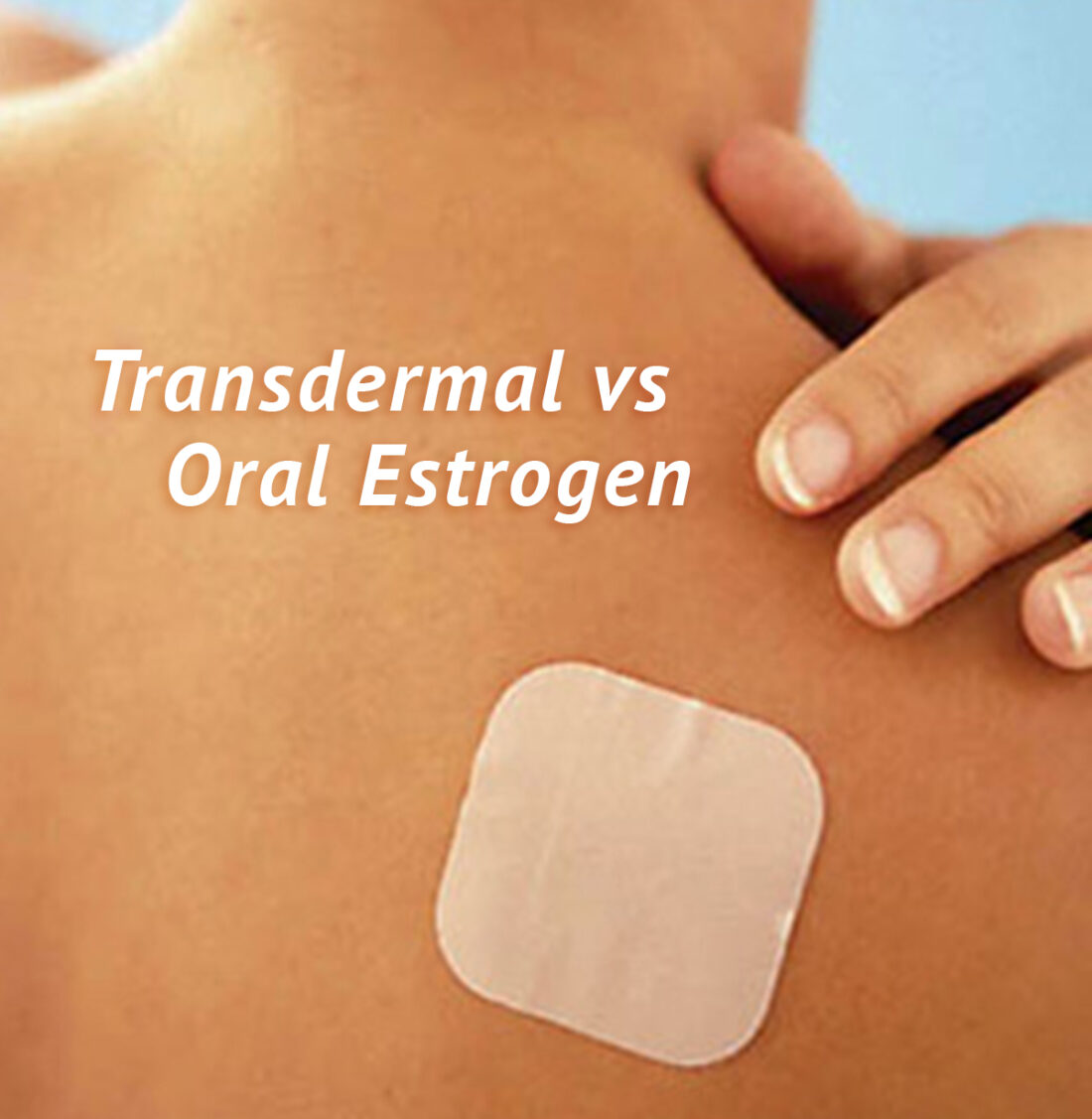
07 Mar Transdermal Estrogen vs. Oral Estrogen
With nearly 40 million women in the United States being in or near menopause, the effective treatment of menopausal symptoms is more vital than ever. Estrogen, which has over 400 functions in the body, including maintaining normal brain function, bone density and blood vessels is one of the primary hormones a woman loses in the menopausal years.
Our goal in bringing a woman’s estrogen back to a healthy level is to do so in the safest way possible. With safety in mind, the route of administration is of chief importance. Traditionally estrogen has been replaced in pill form. The oral method of estrogen replacement requires the first-pass metabolism via the liver and is associated with adverse events. First-pass significantly impairs the bioavailability of oral estradiol. Higher doses of estrogen are required to overcome first pass and this causes the release of liver proteins that can have negative effects on cholesterol, heart functions, inflammation and clotting factors.
When estrogen is replaced using a transdermal or subcutaneous method much lower doses are required and the potentially harmful liver proteins are not released. Transdermal estradiol is available in patches, gels, creams and sprays. Subcutaneous estradiol may be administered via a small pellet that is inserted under the skin, which dissolves over a six month period.
When alternatives to oral estrogen are available it is always advisable to avoid taking estrogen in pill form. Currently, there are several commercially manufactured and compounded options available to our patients.

Sorry, the comment form is closed at this time.